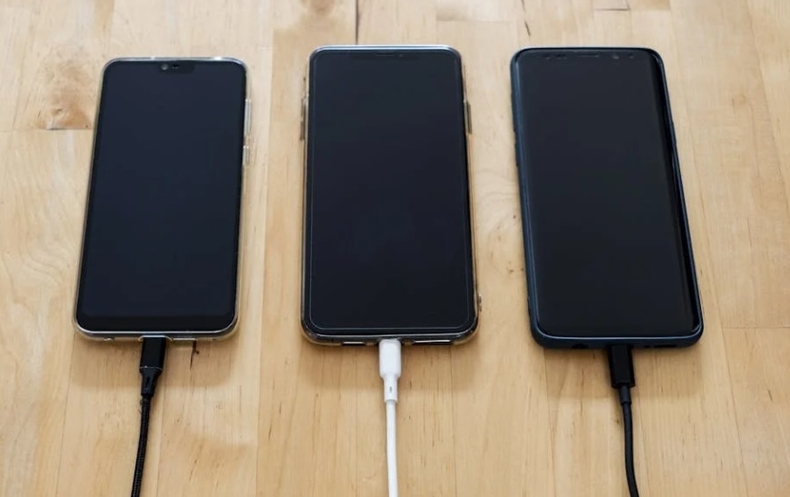
Over the past five years, there have been a total of 612 fires caused by lithium-ion batteries, with more than half attributed to overcharging. Therefore, it is crucial to unplug the battery from the power source once charging is complete to reduce the risk of fire.
On the 22nd, the National Fire Agency introduced the third topic in its series on creating safe habits in daily life, focusing on the 'Proper Use of Lithium-Ion Batteries' in response to recent fire incidents involving these batteries.
Common household items using lithium-ion batteries include smartphones, laptops, electric scooters, electric bicycles, electric motorcycles, e-cigarettes, digital cameras, Bluetooth headsets/headphones, and toys.
According to the National Fire Information System data, there were 612 fires caused by lithium-ion batteries in the past five years. As the distribution and usage of electric scooters and electric bicycles increase, so do the number of incidents.
The causes of these fires varied, including external impacts such as crushing or puncturing, prolonged storage of batteries inside high-temperature vehicles, charging on sofas or beds, using non-certified products, and exposure to water or rain.
Of these, overcharging was the cause in more than half of the cases (312 cases, 51%), followed by non-charging incidents (60 cases, 9.8%), storage-related incidents (49 cases, 8%), incidents during repair (45 cases, 7.4%), usage-related incidents (44 cases, 7.2%), and impact-related incidents (17 cases, 2.8%).
By location, fires occurred most frequently in residential areas: 299 cases (48.9%) in multi-family housing, 117 cases (19.1%) on streets or open spaces, 116 cases (19%) in buildings or repair shops, 65 cases (10.6%) in single-family homes, and 15 cases (2.5%) in parking lots.
To prevent fires caused by lithium-ion batteries, the National Fire Agency emphasizes the importance of proper use at each stage: purchasing, using, charging, storing, and disposing of the batteries.
First, purchase officially certified products (KC certified). If you notice any abnormal signs such as smell, noise, or discoloration during use, stop using the product immediately. If the product malfunctions, seek professional repair rather than attempting to fix it yourself.
Since more than half of the fire incidents are caused by overcharging, unplug the battery from the power source once charging is complete. Avoid charging at the entrance, as it may hinder evacuation in case of an emergency.
(한국어 번역)
한국다문화뉴스 = 심민정 기자ㅣ최근 5년 동안 리튬이온 배터리 화재는 총 612건이며 그중 절반 이상이 과충전이 원인인 것으로 나타나, 충전이 완료되면 반드시 전기코드에서 분리해야 화재 발생 가능성을 줄일 수 있다.
소방청은 22일 최근 발생한 리튬이온 배터리 화재 사고와 관련해 생활 속 안전습관 만들기 세 번째 주제로 ‘리튬이온 배터리의 올바른 사용법’을 안내했다.
생활 속 리튬이온 배터리를 사용하는 제품군은 스마트폰과 노트북, 전동킥보드, 전기자전거, 전기오토바이, 전자담배, 디지털카메라, 블루투스 헤드셋·헤드폰, 장난감 등이다.
소방청 국가화재정보시스템 자료에 따르면, 최근 5년 동안 리튬이온 배터리에 의한 화재는 612건으로 전동킥보드와 전기자전거 등 보급량과 사용량이 증가함에 따라 사고 발생건수도 증가추세에 있는 것으로 나타났다.
화재 원인은 눌리거나 찍히는 등의 외부 충격, 온도가 높은 차량 내부 배터리 장시간 보관, 소파·침대 등에서 충전, 공식 인증을 받지 않은 제품 사용, 물·빗물 유입 등 다양했다.
특히 이 가운데 절반 이상인 312건(51%)이 과충전이 원인이었고 비충전 60건(9.8%), 보관 중 49건(8%), 수리 중 45건(7.4%), 사용 중 44건(7.2%), 충격 후 17건(2.8%) 등 순이었다.
장소별로는 공동주택 299건(48.9%), 거리·공터 117건(19.1%), 건물·수리점 116건(19%), 단독주택 65건(10.6%), 주차장 15건(2.5%) 순으로, 공동주택과 단독주택 등 주거지에서의 발생건수가 가장 많은 것으로 확인됐다.
이에 소방청은 리튬이온 배터리의 화재 예방을 위해 구매, 사용, 충전, 보관, 폐기 등 단계별 올바른 이용수칙을 당부했다.
먼저 공식인증된 제품(KC인증 제품)을 구매하고 사용 중 냄새나 소리, 변색 등 이상현상이 감지되면 사용을 중지하고, 제품 고장 때에는 직접 수리하기보다는 전문가에게 수리를 의뢰하는 것이 안전하다.
화재사고의 절반 이상이 과충전으로 발생하는 만큼 충전이 완료되면 전기 전원을 분리하고 현관에서의 충전은 만일의 사고 발생 때 대피에 어려움을 줄 수 있으므로 삼가야 한다.

